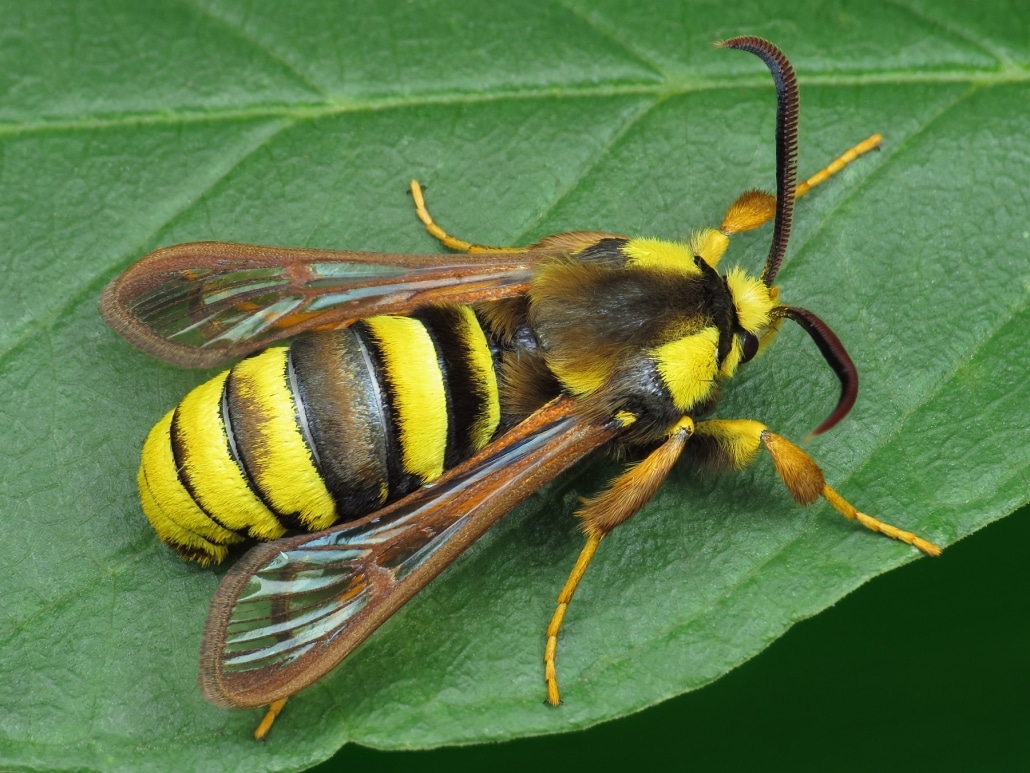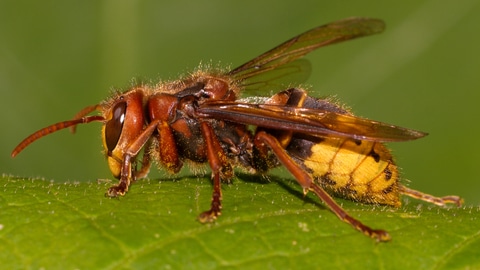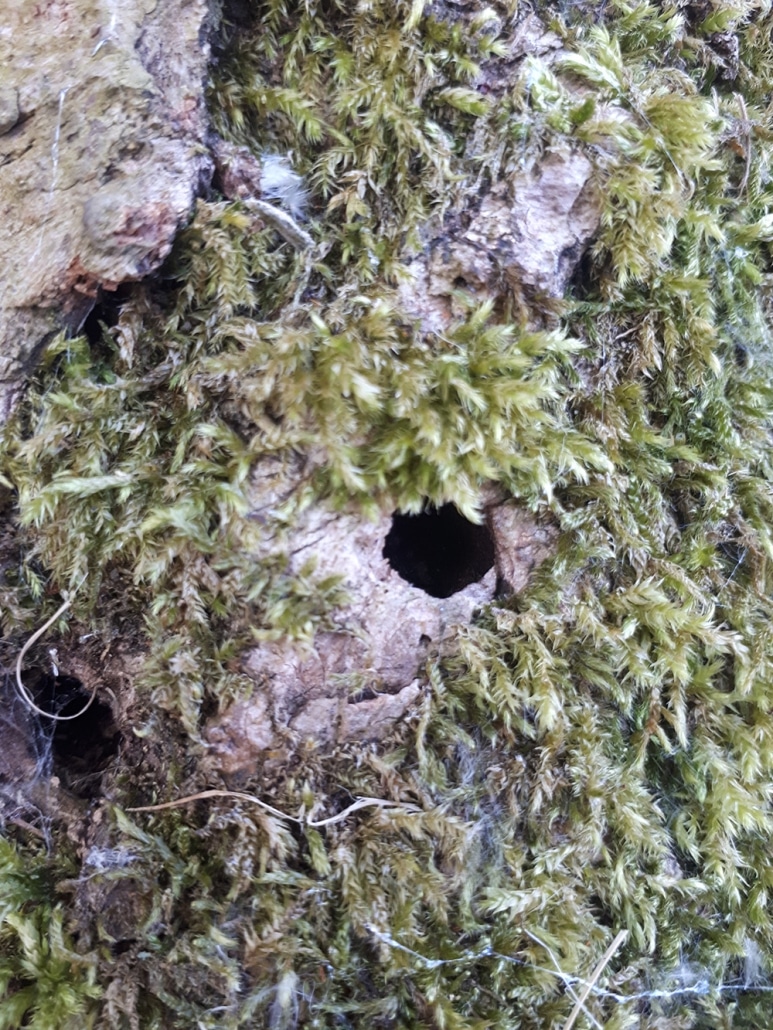Introducing the Hornet Moth
(article by Melanie Penson, Conservation Officer with East Midlands Butterfly Conservation): March 2023
The Hornet Moth (Sesia apiformis) is the largest of our region’s clearwing moths and also one of the rarest. There are currently only seven known colonies within the East Midlands (Derbyshire, Nottinghamshire, Leicestershire and Rutland). Of these, only five have been recently confirmed as active, producing adult moths in June and early July. Three of these active colonies are in Leicestershire and Rutland.
It is a good example of a mimic species; in this instance the hornet wasp.
Hornet Moth
Hornet Wasp
Its mimicry extends beyond its appearance as it even buzzes like a true hornet and dangles its legs in flight. The female moth lays her eggs on the trunks of poplar trees, invariably hybrid black poplars, and the caterpillars burrow inside the tree, eating the pith between the bark and the heart-wood. It is usually in the caterpillar state for two years, sometimes longer. Just before pupation, it enlarges the tunnel to the outside world, shoves out all the frass (poo) and pupates behind a flap of bark, concealing the exit hole. The pupal case is made of chitin and is shed as the moth emerges from its exit hole. The image in the photograph is about the length and thickness of a human thumb.
The adult moths begin to emerge about the third week of June, into early July; usually in the early mornings when they sit on the trunk, inflating their wings before flying up into the canopy. They are rarely seen as adults but they do respond to a synthetic pheromone lure early in the flight season when males are attracted down from the tree canopy. They differ from the similar, but slightly smaller (and far more frequent) Lunar Hornet Moth (Sesia bembeciformis) in having more extensive yellow markings around the head on the Hornet Moth, which lacks the narrow yellow collar on the otherwise black head of the Lunar Hornet. Lunar Hornets are more closely associated with willow trees and in one Leicestershire colony, both species fly together where willows and poplars grow in close proximity.
Regional Survey
There is a region-wide survey taking place of all clearwing (and forester) moths and East Midlands Butterfly Conservation are particularly keen to record Hornet Moth in new localities in an attempt to discover whether this moth is genuinely rare or just rarely recorded. East Midlands colonies have been found on two university campuses, an old quarry, a grassy tree-lined drive on an industrial estate, a farm yard, an old gravel pit and a private garden. These are not habitats often looked at by naturalists so we suspect there may be other Hornet Moth colonies out there.
It is far easier to record larval signs than to look for adults. The larval exit holes have been recorded on at least two hybrid black poplar species, grey poplar and aspen. Elsewhere in Southern England, Lombardy poplars have been used but that does not seem to be the case in the East Midlands on current knowledge. Mature trees are preferred but one of the two Nottinghamshire sites, trees with trunk girths of less than 1 metre are used. The exit holes are always low down on the trunk, up to about 20cms up the trunk but a significant proportion exit through buttress roots, either those breaking the ground surface or just a few centimetres below the soil. These can be up to 1 metre away from the actual tree trunk. The holes are large enough to fit a pencil in and no other species produces holes of this diameter low down on poplar trees.
Hybrid Poplars
With hybrid poplars being such a common feature of our urban and sub-urban landscape, you would think that these moths would have a wide choice of egg-laying sites but this is not the case from experience searching for new Hornet Moth colonies over 2022 and 2023. In all cases, active colonies use trees that are free-standing, not surrounded by shrubs or tall herbs and not covered in ivy (though a little moss is acceptable). The tree trunks are exposed to full sunlight for a significant proportion of the day and most are growing in regularly mown grass, which presumably increases the ground temperature sufficiently to enable larvae to be active and complete their life cycle. Regular water-logging apparently deters moths from using the trees and in one site, a tree growing in clay soil has noticeably fewer exit holes than the others in the group that are growing in more free-draining soil.
All these environmental conditions are met on golf courses, where often the trees were planted long enough ago to be mature enough to attract egg-laying female Hornet Moths.
Please can you look out for larval signs on suitable poplar and aspen trees on the golf courses you use? It’s the perfect excuse to use if your ball goes astray! Any sightings can be reported to me via my email address: harfangneige2018@gmail.com






